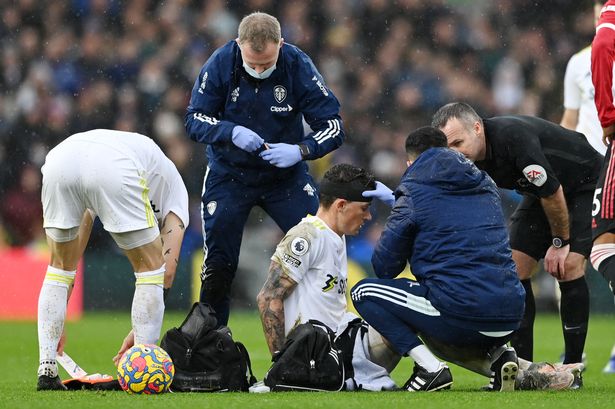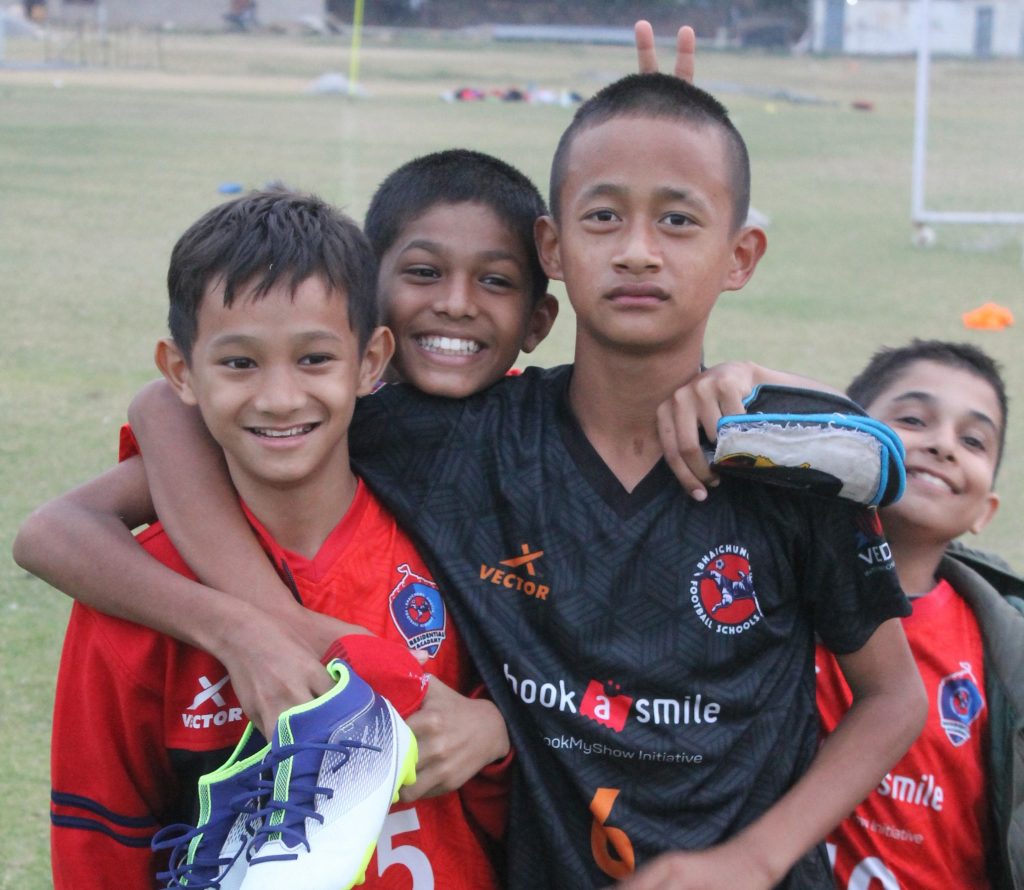Head injuries in football
Last week, when Koch was subbed off sustaining a head injury, it rang football’s long-standing question against the seriousness of head injuries and its diagnosis on the field.
Here’s what happened.
Leeds United were playing against Manchester United in a Premier League fixture. Within the first few minutes of the game, defender Robin Koch sustained a cut on the forehead after colliding with Scott McTominay. After minutes of examination, Robin was allowed to continue playing. Soon, he manifested concussion-like symptoms and was compelled to leave the field.

Generally, when a player sustains a head injury, the protocols for diagnosis are pre-set by the governing body. Medical teams ask a specific set of questions and assess for a while, depending on which the athlete continues playing or leaves the pitch. Mind you, these questions and assessments happen within a few minutes.
In Koch’s case, the conclusion was he is fit to continue despite suffering a bloody injury. However, his injury worsened very soon.
Looking at the lack of clarity and falter in judgment, the Professional Footballers’ Association (PFA) and Headway, a brain injury charity, criticized the current protocols set by the International Football Association Board (IFAB), the sport’s lawmakers.
Luke Griggs, the deputy chief executive of Headway, questioned the organizers.
“Concussion protocols in all sports clearly state ‘if in doubt, sit it out’ The Premier League needs to come out and explain to everyone – particularly impressionable youngsters and grassroots players – what the word ‘doubt’ actually means because I think we have a different definition,” said Mr. Griggs to SkySports.
A similar situation happened a few days back in Indian cricket, where Ishan Kishan suffered a head injury failing to duck a bouncer. After a few minutes spent on the pitch, Ishan was declared fit to continue.
His performance deterred, and he lost his wicket soon in the following overs. Later in the day, Ishan was hospitalized for further diagnosis.
So, if this is the situation in elite sports, where concussions do not have enough clarity, what is possibly happening at the bottom of the pyramid?
Football’s battle against head injuries is long-standing
Of course, the process at the grassroots age-groups is scattered. The awareness is abysmal and precautions are farce. But, concussions caused during a game is not just the problem. There are other issues to tackle.
Multiple actions lead to serious head injuries.
Research states that heading a lightweight football results in long-term head injuries as well. It can cause problems with thinking, muscle memory, and balance. Prolonged heading of a football also causes subconcussive injuries, which is not as serious as a concussion. But over time, repeated actions may cause serious damage like neurodegenerative disease.
Generally, younger generations are at a higher risk of attaining brain injuries from heading. And it is imperative to set standard guidelines for such age-groups, which at the moment lacks in world football. However, countries like the USA and Scotland have banned heading of the football for grassroots and sub-junior categories.

Mr. Sunil Patwal, the Technical Director of Bhaichung Bhutia Football Schools (BBFS) agrees. He says that footballers in the junior categories should be completely discouraged from heading a football. And that heading drills must be removed from training sessions.
“Traditionally, I have seen many academies do the opposite. They think that heading practice is a vital component of football training, but it is the opposite.
Heading comes naturally to athletes. It is about timing, jump, and execution. But I have seen so many academies getting it wrong.
Our coaching methodology restricts heading in practice sessions and even matches. Instead we encourage chest-trapping and playing on the ground. When our Portuguese partners from Football by Carloz Queiroz (Former Head Coach of Portugal and Real Madrid) flew to India and developed our coaching methodology, they strictly instructed that athletes below 13 must not head the football.
One of the reasons is fear of injuries; the second is our style of play. We want our youngsters to be able thinkers of the game and play possession-based football. We focus on creating situations where players get tested on their intelligence. At BBFS, we force them to keep the ball on the ground and play quick passes to break the opponent’s defense. This is applied even in reputed competitions like the I-League and we have attained positive results” reiterated Mr. Patwal.
Reforms in substitution and specialization are paramount
Mr. Patwal further stated about the provision for temporary substitution at the elite level if a player suffers any head injury.
“The player must be immediately substituted if they face any head injuries. I even feel that a neurologist should always be present on the ground to assist with such injuries during a match. The governing bodies need to prioritize this and ensure we reduce the chances of future damage,” said he.
The International Football Association Board will host their Annual General Meeting on 3rd March. FIFA President Gianni Infantino will chair the session. Among many topics up for discussion, the issue related to concussion is in the roster.
It remains to be seen if reforms are made and set guidelines are introduced for each age-category.
Read more about BBFS Residential Academy
Download enJogo, India’s first football learning app on Android and iOS
Read the last five editions from The Dugout:
#31 An IPL-style auction and opportunity for underdogs
#30 What has Shaolin Soccer got to do with Chak De! India
#29 Taekwondo Football The American Dream
#28 Kheloge kudoge to…banoge CEO
#27 From India to Europe: a young footballer’s dream journey
